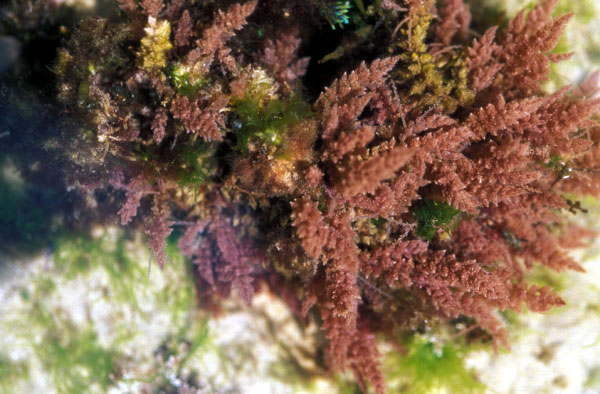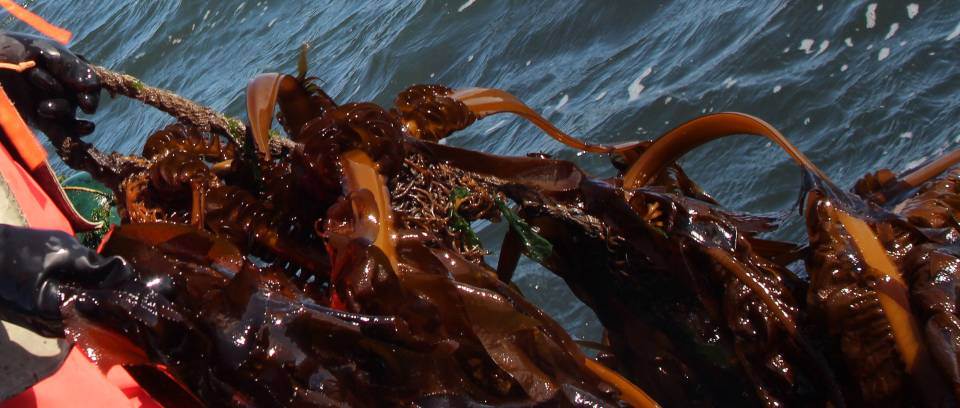The United States has a small net-pen salmon industry dating back over 40 years and a nascent net-pen industry for other marine fish. The United States net-pen aquaculture sector has improved its resource efficiency in terms of the amount of fish meal and fish oil used in feeds and reduced its environmental impacts in terms of the mass loading and impact of nutrient discharge on the receiving ecosystem, the incidence and treatment of fish diseases, the use of antibiotics, and the number and impact of fish escapes, while increasing production. These changes can be attributed to a combination of advances in science and technology, rising cost of fish meal/oil, improved management, and informed regulatory practices. Net-pen aquaculture has become an efficient food production system. Existing laws and regulations in the United States effectively address most of the potential adverse environmental effects of net-pen aquaculture.
Digital library
-
-
Concern for possible environmental damage constrains development of the aquaculture
industry in the United States. Potential environmental interactions, including degradation
of water quality, introduction of exotic species, pollution of the seafloor, adverse interaction
with the seafloor benthic community, adverse interactions with protected species, and genetic interactions of potential escapees are all generally viewed as negative interactions, and thus are of substantial concern to the public and to regulators. Certainly, the culture of finfish in cages can be detrimental to the local water quality and the benthos beneath the cages when the fish are overfed or when too many production units are located in an area of limited carrying capacity or restricted circulation, as has been demonstrated by numerous published reports (see Black 2001 for a summary). -
Seaweeds are multicellular algae that occur in marine and brackish-water and that, at some stage in their lives, are attached to a substrate. World-wide there are approximately 10,000 species of seaweeds and at least 221 species of seaweed are utilised by humans. 145 species are used for food while 101 species are used for phycocolloid production (i.e. alginates, agar and carrageenan). Each year around 2 million tonnes dry weight (approximately 13 million tonnes fresh weight) of seaweed is collected at a value of in excess of US$6.2 billion. 50% of this seaweed (by volume) is cultured and approximately 10% of cultured seaweed comes originates in the tropics. In the tropics the vast majority of seaweed farmed is of the genera Eucheuma or Kappaphycus. Approximately 120,000 tonnes dry weight (t dw) of Eucheuma/Kappaphycus are produced annually compared with approximately 15,500 t dw of Gracilaria and 800 t dw of Caulerpa (Zemke-White and Ohno 1999). Most of the Eucheuma/Kappaphucus is farmed in the Philippines (~95,000 t dw), followed by Indonesia (22,000 t dw), Zanzibar (4,000 t dw), Malaysia (800 t dw), Kiribati and Madagascar (both around 400 t dw). Most of the Gracilaria is farmed in Indonesia (~13,500 t dw) and almost all of the Caulerpa is farmed in the Philippines.
-
Fish farming using net pens in some Japanese enclosed bays started in the late 1950s and was referred to as “the conversion of catching fisheries to rearing fisheries.” Net pen aquaculture has increased rapidly in popularity in the enclosed coastal areas of Japan since the 1970s. Total yields from net pen aquaculture recently reached approximately 270,000 metric tons, the majority of which is contributed by the culture of yellowtail, salmon, and red sea bream (Shirota 1990, MAFF 2005). A major problem of using net pens that has yet to be solved is that the fish are reared at extremely high densities with limited space and they require large amounts of food. Dissolved oxygen (DO) tends to decrease in the water in the net pens during the night due to respiration of the fish and the cessation of photosynthetic activities of phytoplankton (Hirata and Kadowaki 1990). Only 10% - 20% of the food fed to cultured fish contributes to their somatic growth. The remainder tends to be discharged as waste in the form of organic particles and inorganic nutrients outside the net pens, often causing organic enrichment of the sediment just below the fish farm and eutrophication of the water in the coves and bays where the fish farms are located (Tsutsumi and Kikuchi 1983; Hirata et al. 1994).
-
The impact of aquaculture on the environment and effects of environment on aquaculture production have become important issues in recent years. There is evidence from many countries that environmental deterioration is a major threat to aquaculture production and product quality. There is also evidence that marine and freshwater aquaculture can cause environmental change, which in some cases may adversely affect the long-term viability of the aquaculture operation itself, or result in serious conflicts with other users of aquatic resources. These problems have led to a need to consider aquaculture as one component in the aquatic ecosystem and to plan aquaculture development in a way which makes efficient use of resources. There have been several recent reviews of impacts associated with finfish (Beveridge, 1984; NCC, 1989), mollusc (ICES, 1989; NCC, 1989) and crustacean (Phillips et al, 1990) culture but there is little information on seaweed culture.
The main environmental impacts caused by aquaculture have been reviewed in several recent publications (NCC, 1989; ICES, 1989; NCC, 1990) and can be summarised as follows:
i. physical effects, including effects on water movement, the physical structure of terrestrial and aquatic habitats and aesthetic impacts;
ii. ecological effects, including changes in water quality, primary and secondary productivity and native fisheries.
These effects have arisen in many forms of aquaculture, although impacts vary considerably depending on the nature of the culture system and species cultured, plus the environment where the culture system is located. The main impacts and problems come from intensive aquaculture with high stocking densities and supplementary feeding, but problems have also arisen in extensive aquaculture systems.
Seaweed culture has expanded rapidly over the past few years, and in 1987 3,139,473 tons (wet weight) of seaweed were produced throughout the world, the bulk produced in Eastern Asia (FAO, 1989). This expansion has brought benefits in terms of income, employment and foreign exchange, but has also been accompanied by some conflicts with other users of the coastal zone and concerns over potential environmental impacts. The aim of this review is to consider some of the environmental implications associated with seaweed culture and ways in which issues may be resolved.
-
This policy brief highlights key challenges that must be addressed for the long-term sustainability of the global seaweed industry, ensuring its role in providing nature-based solutions within the sustainable ocean economy agenda and in contributing to the UN Decade of Ocean Science for Sustainable Development (2021 – 2030).
Seaweed production has grown rapidly over the past 50 years. It currently accounts for over 50 % of total global marine production, equating to ~35 million tonnes. In 2019, the industry’s total value was estimated at USD 14.7 billion. The seaweed value chain supports the livelihoods of approximately 6 million small-scale farmers and processors, both men and women, many of whom live in coastal communities in low- and middle-income countries.
The aquaculture sector is increasingly interested in seaweed because of its potential for greater use in food, food supplements, animal feed, fertiliser and biostimulants, and in alternatives to fossil fuels and their derived products, such as plastics. Its cultivation can help restore degraded environments, increase ocean biodiversity and mitigate the effects of climate change and coastal acidification by capturing carbon and other nutrients. In low-, middle- and high-income countries, the seaweed industry has a wide-ranging potential to address the UN Sustainable Development Goals (SDGs) in particular, SDG 14 (life below water), SDG13 (climate action), SDG6 (decent work and economic growth) and SDG5 (gender equality).
The global seaweed industry, however, faces significant challenges. For future sustainability, improvements are urgently needed in biosecurity and traceability, pest and disease identification and outbreak reporting, risk analysis to prevent transboundary spread, the establishment of high quality, disease-free seed-banks and nurseries and the conservation of genetic diversity in wild stocks.
These improvements require technological innovation, capacity building and effective gender-responsive and co-ordinated policies, incentives and regulations. They will need to enhance occupational safety, whilst increasing the industry’s resilience to the impacts of climate change and production hazards, such as pest and disease outbreaks. To align with the SDGs, particular attentions will need to be paid to small scale farmers and processors to ensure that the globalisation of seaweed aquaculture supports the development of sustainable, resilient and inclusive livelihoods.
-
New sources of protein are required to supplement current animal- and plant-protein. Here, we quantify the quality and yield of four protein-enriched biomass products (PEB-I to PEB-IV) and a protein isolate (PI) from the commercially produced seaweed Ulva ohnoi. To decrease the content of components of the biomass that may be undesirable in feed, we have developed a multi-step biorefinery process to produce salt, sulfated polysaccharides (ulvan), and protein products. The content of protein increased from 22.2 ± 0.4% dry weight (dw) in unprocessed biomass to between 39.5 ± 1.9% in the PEB-IV and 45.5 ± 0.8% in the PI. The quality (mol % of essential amino acids [EAA]) of the protein products was similar to soybean meal, with 41.6 ± 0.1 and 43.4 ± 0.1 mol% EAA in PEB-I and the PI, respectively. The yield of PEB products varied from 16.3 ± 0.8 to 41.0 ± 0.8% of the unprocessed biomass, with PEB-I > PEB-II = PEB-III > PEB-IV. The yield of all PEB products was more than four-fold greater than the PI (4.4%). Conservatively, the biomass productivity of U. ohnoi is 70 t dw ha−1 year−1 resulting in a projected annual production (t dw ha−1 year−1 ) of 24 t of salt, 4.3 t of ulvan, 29 t of PEB-I, or 3.2 t of PI using this biorefinery process. With nine-fold higher yield, and a protein product of similar quality to the PI, we recommend producing PEB-I by concentrating the protein through the extraction of salt and ulvan over the extraction of a PI for the development of food and feed products.
-
The contribution of the DOST-PCARRD AFNR Project 2.3 from SY 2009-2011 has demonstrated transformed changes in the AFNR curriculum. These changes are well recognized as it has attracted more enrollees in the region’s dwindling AFNR courses. The study presented the implementation of the AFNR Project 2.3 in Zamboanga Peninsula as an intervention to the observed down trend enrolment in the AFNR courses since SY 2001 onwards. The AFNR Project 2.3 was implemented for the duration of two years from SY Feb 2009-Feb 2011. The project at the regional level enabled students’ preparation for employability, equipped them with entrepreneurial skills, with the integration of strong S & T contents in the courses through the modular approach. The Western Mindanao State University (WMSU) played the lead institution in the region with three collaborating SUCs, namely, JH Cerilles State College (JHCSC), Zamboanga State College of Marine Sciences and Technology (ZSCMST), and the two campuses of Jose Rizal Memorial State University (JRMSU). Towards the end of its implementation for the second year, the project achieved the following gains based on its objectives: (a) Enriched 10 BS curricular programs (b) reviewed 81 AFNR subjects (c)enriched at least 70 courses in the 10 BS AFNR Programs and (d) introduced 30 short term courses respectively.
-
Intensive algal cultivation usually requires a high flux of dissolved inorganic carbon (Ci) to support productivity, particularly for high density algal cultures. Carbon dioxide (CO2) enrichment can be used to overcome Ci limitation and enhance productivity of algae in intensive culture, however, it is unclear whether algal species with the ability to utilise bicarbonate (HCO32) as a carbon source for photosynthesis will benefit from CO2 enrichment. This study quantified the HCO32 affinity of three green tide algal species, Cladophora coelothrix, Cladophora patentiramea and Chaetomorpha linum, targeted for biomass and bioenergy production. Subsequently, we quantified productivity and carbon, nitrogen and ash content in response to CO2 enrichment. All three species had similar high pH compensation points (9.7–9.9), and grew at similar rates up to pH 9, demonstrating HCO32 utilization. Algal cultures enriched with CO2 as a carbon source had 30% more total Ci available, supplying twenty five times more CO2 than the control. This higher Ci significantly enhanced the productivity of Cladophora coelothrix (26%), Chaetomorpha linum (24%) and to a lesser extent for Cladophora patentiramea (11%), compared to controls. We demonstrated that supplying carbon as CO2 can enhance the productivity of targeted green tide algal species under intensive culture, despite their clear ability to utilise HCO32.
-
The cultivation of seaweed as a feedstock for third generation biofuels is gathering interest in Europe, however, many questions remain unanswered in practise, notably regarding scales of operation, energy returns on investment (EROI) and greenhouse gas (GHG) emissions, all of which are crucial to determine commercial viability. This study performed an energy and GHG emissions analysis, using EROI and GHG savings potential respectively, as indicators of commercial viability for two systems: the Swedish Seafarm project's seaweed cultivation (0.5 ha), biogas and fer- tilizer biorefinery, and an estimation of the same system scaled up and adjusted to a cultivation of 10 ha. Based on a conservative estimate of biogas yield, neither the 0.5 ha case nor the up-scaled 10 ha estimates met the (commercial viability) target EROI of 3, nor the European Union Renewable Energy Directive GHG savings target of 60% for biofuels, however the potential for commercial viability was substantially improved by scaling up operations: GHG emissions and energy demand, per unit of biogas, was almost halved by scaling operations up by a factor of twenty, thereby approaching the EROI and GHG savings targets set, under beneficial biogas production conditions. Further analysis identified processes whose optimisations would have a large impact on energy use and emissions (such as anaerobic digestion) as well as others embodying potential for further economies of scale (such as harvest- ing), both of which would be of interest for future developments of kelp to biogas and fertilizer biorefineries.





